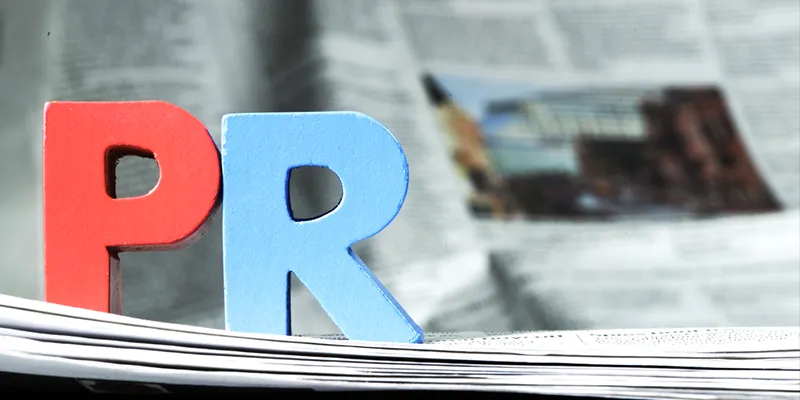Here’s how you can ace your PR game
The public relations sector is booming and many independent agencies have cropped up all over the country. But how can you prepare the perfect pitch?

Business is a risky endeavour yet more rewarding than any other form of employment. In the business of public relations (PR), an agency has to first sell its services to a client before engaging in the arduous process of image building. Clients are the backbone of any PR agency, especially the retainers who help the business to gradually grow from a small scale set-up to a full-fledged firm. These retainers pen down an agreement to hire a PR agency for a minimum duration of one year for which it pays the agency a certain lump sum each month. Thus, retainers, especially the larger ones, are coveted by PR organisations.
With the sector booming, many small independent agencies have cropped up all over the country. For one decent pitch, you would go up against many small, medium and large firms vying for the same account. Not to mention freelancers at every corner offering their services at half or less than half the cost. In such a scenario, apart from money, the only differentiator is how each party pitches.
It all boils down to the ‘pitch’ presented to the potential client.
In the PR world, first impression is indeed the last impression. Especially, if there are ten other teams on their best behaviour competing for the same business as you are. You only get one chance to pitch your business and build the best impression about yourself and the services you offer, in the client’s mind. If that chance is lost, then you can be rest assured that you have lost the retainer even before the final selection is announced.
It is not just true in the PR industry. A good and effective pitch can take you far as well as creating long-lasting relations with your client. The opposite of this is also true because a bad pitch will leave a negative impression in the mind of the prospective client and may impact your reputation in the industry. When the stakes are high, there cannot be room for mistakes, especially silly ones. So tighten your belts, polish your shoes and iron your shirt - adhere to every etiquette protocol when going for a business pitch.
Here are a few key pointers one should adhere to when preparing a pitch.
- Understanding the category – Every industry operates on different paradigms. When a business opens for a pitch, one needs to study the sector and industry in which the prospective client operates. A major chunk of strategic communication planning relies on how the industry is regulated, how a client’s interests are aligned and how it operates. It is easy to derive the core marketing function of a brand on the basis of the industry in which it operates. For example, the launch of a new restaurant needs a robust PR plan vis-a-vis advertising, but an FMCG brand would need to invest more in advertising than PR.
- Understanding the client's business - This is the next important step. Keep your family close but keep your clients closer. How will you promote your client if you don’t know what their business is all about? The better your understanding of the business, the sector and the overall landscape of the industry, the more it will reflect in your pitch. It also helps when the potential client blindsides you with random questions to gauge your knowledge. So read your fill, and make notes if required. But don’t leave room for any sort of stumbling.
- Understanding a client’s objective to hire a publicist – When a company opens for pitch, that’s because it wants experts to fulfil a particular objective to drive the business. The foremost thing to keep in mind while devising the communication plan is to understand or pre-empt the client’s business objective and how your proposed PR plan will help the company to achieve its business goals. Most pitches fail when they cannot bridge this gap. Majorly, a PR campaign is expected to deliver sales and new business development but it may not always be the case.
- Brevity is the key to impress- Prepare your pitch to be crisp and to the point. It should follow a definite path from point A to B, without convoluted ideas in the middle to turn the business proposition into a fairytale. The client is not interested in knowing irrelevant trivia. Limit the verbosity and brush up on your synonyms before you enter a meeting.
- Let the client lead – During the pitch, it’s important that the client leads during the entire process. Let them do the talking and lead the conversation because it helps to build confidence between both parties. It is important to listen and understand the client’s requirements and then offer a solution for their problems. Illuminating one’s own expertise without having an idea about what the client wants to hear is a sure-shot way to get eliminated from the race.
- Pitch to the right people – Preach at the right door. During the pitching process, this means that the person to whom you make your business pitch plays a key role in whether you will get the business or not. Thus, it is important to always meet the key decision maker. This saves your point of view from getting lost in the noise of hierarchy and hastens the process of selection. However, in your bid to reach the big guy, be sure to not step on the toes of the people on your way.
- Do not underestimate the power of good presentation skills. - The right balance of graphics and text can transform a pitch from a boring droll to an engaging conversation about business growth. The aim is to highlight the key messaging. The quality of your public relations’ service should be crystal clear.
- Add value to your client's business by making your pitch cost effective and useful to them. Unreasonable demands can shut down the client’s amicable side faster than you can blink. Don’t over-value your services, but don’t undersell yourself either. Find that balance. This is the point that can make or break any PR agency. You can always find someone who will do what you have promised to do for your client at a way lesser fee. So the way you ‘pitch’ yourself or your agency can be the difference between the growth of your company or its eventual complete shut-down.
- Showcase your good work - Include case studies of how you have helped other brands you have on-board from the same category grow by leaps and bounds. Success stories always build confidence. For this, quantify your work to highlight how your contribution can be significant in impacting your client’s business. There’s no better or convincing evidence than a good show of numbers to present their return on investment.
- Do not give up and keep trying till you succeed. Each pitch is important because win or lose there is always a lesson to be learned. So keep on! If plan A fails, then get a plan B. If the client doesn’t like your pitch, plan another one. If you don’t get that chance, use the learning while pitching to another client. PR is a booming sector and there is a lot of pie to go around.
Remember, there is no thumb rule to a good pitch. Every client is different and so is the approach towards every pitch. Business acumen is irreplaceable when it comes to understanding the client’s mindset, which if done properly, makes the process of preparing a pitch much easier.
Of course, many times, a person’s work speaks for itself. With good reputation and luck on the side, some business deals go through without a pitch. For everything else, one has to hustle.
(Disclaimer: The views and opinions expressed in this article are those of the author and do not necessarily reflect the views of YourStory.)







